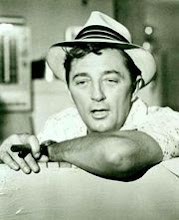
Every year, five million cats and dogs are gassed to death or lethally injected with sodium pentobarbital in American animal shelters. The word 'euthanasia' is a grotesque euphemism. There is no mercy in these deaths. Most of the animals are healthy, rambunctious, and young. They die terrified, and they die pointlessly: very few are vicious; most are capable of forming deep affectionate bonds with humans.
Some are sick or injured, but could be saved with little effort. Some are feral cats who before their detention were enjoying or enduring lives no better, perhaps, but certainly no worse than that of any other wild animal.
Until recently, the public was generally unaware of the extent of the slaughter; those who knew were told by shelter authorities that there was no choice: America was suffering from a "pet overpopulation" crisis, the consequence of the public's irresponsibility in permitting their animals to reproduce without restraint and their propensity to abandon puppies and kittens that had outgrown their initial fey charm.
Shelters in America have begun to use the No Kill model, with dramatic results
Enter Nathan Winograd, attorney for the condemned. In 1994, Winograd, a graduate of Stanford law school and former criminal prosecutor, abandoned his lucrative career as a corporate attorney to begin a campaign against the killing, and in doing so, started a revolution in American animal shelter practices.
There were more than enough Americans who would be willing to adopt these animals if they knew about them, Winograd argued, and there was always an alternative to killing them. The problem was not the irresponsibility of the American public; it was the shocking unwillingness of shelter workers to exercise the slightest bit of imagination, practical or moral, to find alternatives to killing. Case in point: shelters that campaigned to discourage people from adopting puppies and kittens at Christmas time.
In 2001, Winograd was appointed executive director of the Tompkins County SPCA in upstate New York. Upon his arrival, he told his employees that there would be no more killing - period. If they could not figure out a way to find homes for the animals in their care, they would be fired. "Staff," he told them, "are paid to save lives. If they throw up their hands and say 'There is nothing we can do,' I may as well eliminate their position and use the money more constructively to either hire someone who will find a solution or for something else like temporary boarding space at a local kennel."
It is ludicrous that the lives of feral cats are so bad that it is kind to kill them
Within a year, half the staff were fired and 93 per cent of the animals were saved. The shelter's budget deficit was transformed into a surplus.
In 2005, Winograd founded the No Kill Advocacy Center, a national organisation aimed at ending the killing of pets in animal shelters. Thanks largely to Winograd, shelters throughout America have begun to implement the No Kill model, with dramatic results. Cities such as Philadelphia and Charlottesville have ceased to be animal-extermination machines.
The No Kill model involves trapping, vaccinating, neutering and releasing feral cats - not least because killing the animals simply doesn't control their numbers. Cats will keep breeding until their population reaches the limits of what the local rat and garbage population will support. Unless they are exterminated to the very last kitten, they will keep replenishing themselves.


No comments:
Post a Comment